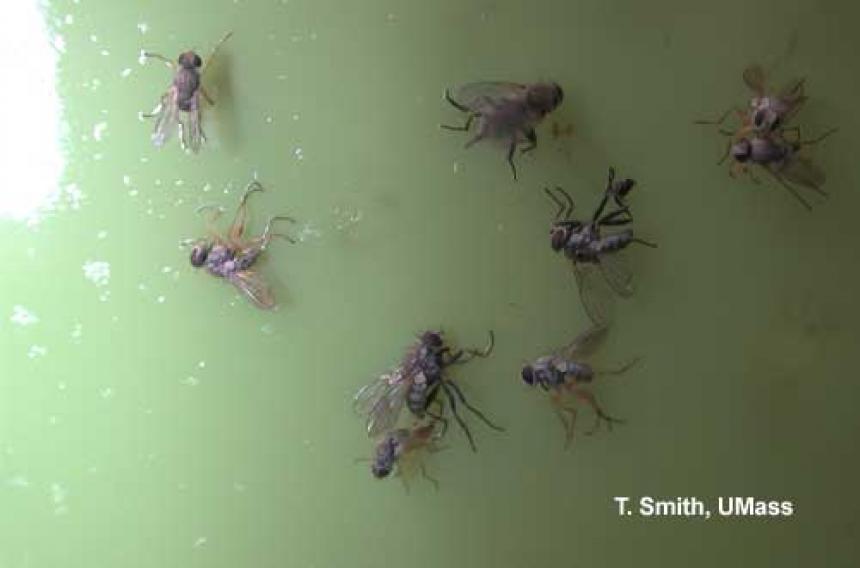Hunter flies (Coenosia attenuata) are very small predaceous flies that have been observed on yellow sticky cards in Massachusetts and Connecticut greenhouses.
Hunter flies are originally from Europe and were most likely introduced on plant material. They were first found in the United States in October of 1999 at a commercial greenhouse in upstate New York. Hunter flies are in the same family as common houseflies and are similar in appearance, but smaller.
In Europe, these flies are members of a predatory community that colonize greenhouses from the outside and also complete their development in the greenhouse soil and become established there for long periods of time. Both larval and adult stages are predaceous. Adults sit and wait and only pursue prey that are in flight. Hunter flies may prey upon fungus gnats, shore flies, Liriomyza leafminers, moth flies and whiteflies.
Adult females lay eggs in the soil that hatch in about 5 days. The fly larvae seek other soil dwelling insects such as fungus gnat larvae as prey. Larvae grow for about two weeks and then pupate in the soil for two weeks.
